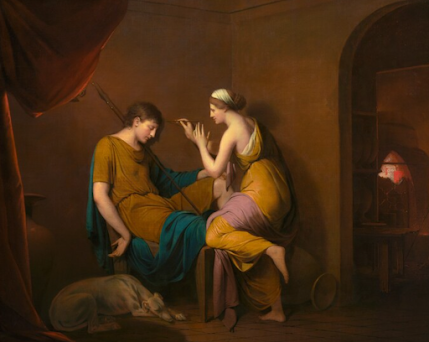Non-Western Exhibit - Marajoara Pottery and Ceramics -
The people of Marajoara
A small island spanning 183 miles long and 124 miles wide in the Amazon River off of the Atlantic Ocean in Brazil lies the island of Marajoara. "Marajó is an island at the mouth of the Amazon River. It is the largest river island in the world. It is bigger than many Caribbean islands (like Puerto Rico and Jamaica) and bigger than some countries (like Belgium and Switzerland)." (Albert) This island was created by sediment deposits from the river and was once inhabited by a tribe of inventive, tradition creating, and artistically talented people. The most memorable art of their culture that is still preserved and practiced to this day is their pottery crafting. I will be displaying 3 pieces of these amazing works and talking about how and why they were created and what they could have been used for.
"Studies on Marajó began to take shape in the 19th century and archaeologists have claimed signs of human activity on the island as early as 1000 BC, but it is argued that the ancient Marajóara culture was at its peak between the years of 800 AD and 1400 AD. Evidence of a sophisticated civilization came when excavations on the island unearthed large, impressive samples of decorated pottery. In addition, great earth mounds were found on the island, which is considered work that only a sophisticated, structured society is capable of carrying out." (Marajoara)
Image provided by: Metropolitan Museum of Art
The piece above is a beautiful plate or serving platter with a light cream-colored base and an orange color of pottery was used to etch in the geometric designs that appear like a maze. These pieces are so beautifully made with such concise line work and attention to detail. I imagine this being used on a dinner table for a feast. As one of my source's states "Marajoara plate. This plate has a painted geometric design that looks a little like the body of a snake, and also like the lines made by canals. A plate like this would have been used to serve food at an important ceremony." (Brian)
This next piece is a small figure depicting a person with the same geometric designs with intricate line work and carvings of the human features. A lot of figurines like this have been found all over the island and some of them have been decapitated or broken in a certain way that has led historians to believe it was a part of some kind of ritual whether it be for mourning or maybe reaching a new milestone in life. I like this piece because it looks like the person is being portrayed as relaxing with their eyes relaxed and they are sitting down with their hands behind their head, I would imagine this piece being a model of someone on a leisurely evening while enjoying a celebration with their tribe of people.
These little figurines are fascinating and kind of a mystery, one of my sources says "As well as pottery, excavations on Marajó island have unveiled a great deal of small figurines between 9 and 18 centimeters in height. Many of the pieces found seem to represent decapitated bodies or broken parts representing heads. This suggests that there may have been some sort of practice, which involved removing and discarding the heads of the figurines." (Marajoara )

Image: National Museum of the American Indian
This final piece was particularly interesting to me because I would of never thought that works of poetry would be worn as clothes or garments. This piece was meant to be worn on a girl or woman like underwear. This is also one of the only pieces I saw that did not have the orange color of terracotta like pottery. The geometric lines on this piece also appear to be drawn on instead of carved and the lines are thinner and have more breaks in the pattern with different symbols. This piece was said to be named a "Tanga. This ceramic would have been attached to clothing worn by women during a coming-of-age ceremony. It is shaped and curved so that it can be worn similar to underwear. The designs likely helped identify different families or social groups". (Brian)
Overall, these pieces are unique and beautiful in their own ways and the imagination can run wild with what their history is and what they were originally used for, but I do trust the findings of historians.
"Among the most cultivated artifacts found in Brazil is the Marajoara pottery (800 to 1400 A.D.), which originated on the island of Marajó and in the area around Santarém. The ceramics are decorated with pictures and complex human and animal reliefs. Small statues and cult objects, such as small carved stone amulets called Muiraquitãs, are also part of this culture.
At the beginning of the 21st century, many of the ancient traditions were still practiced and maintained by the remaining indigenous people. These include body painting, ceramics and small statues." (Michael)Works Cited
Michael Krämer und das Aventura do Brasil Team. “Art in Brazil.” Historical Development of Art in Brazil | Aventura Do Brasil, Aventura Do Brasil, 7 May 2020, www.aventuradobrasil.com/blog/art-in-brazil/.
Brian McCray. “Ancient Marajó.” ORIAS, UC Regents,
“Marajoara Art - Ancient Pottery from the Island of Marajó.” Brazil Selection, Brazil Selection Travel, 13 Mar. 2020,www.travel-brazil-selection.com/news-blog/2020/03/13/marajo-art/.
Albert, Melissa. “Marajó Island.” Encyclopædia Britannica, Encyclopædia Britannica, Inc., www.britannica.com/place/Marajo-Island.





Comments
Post a Comment